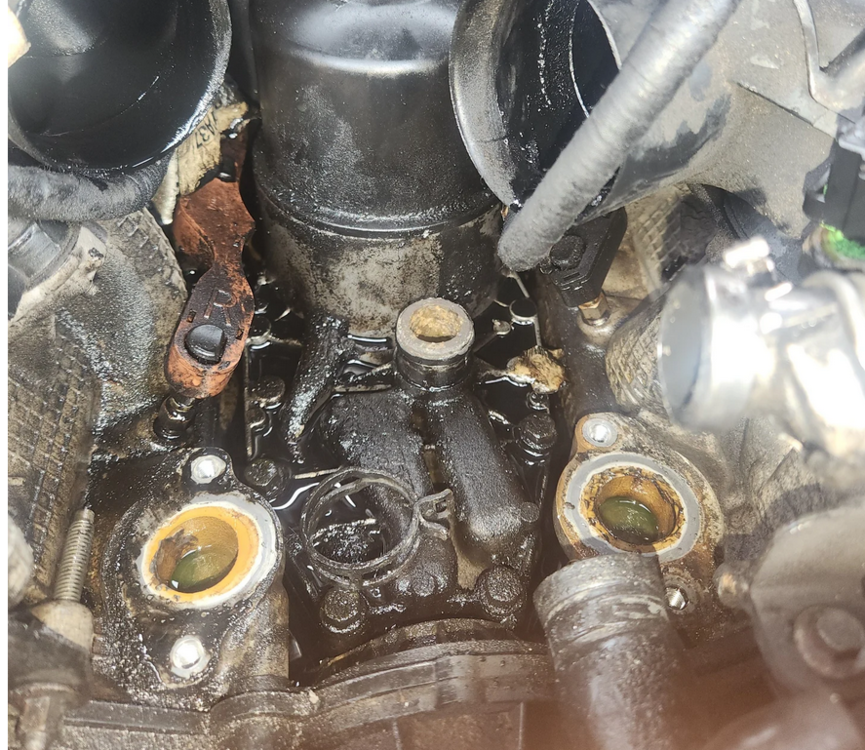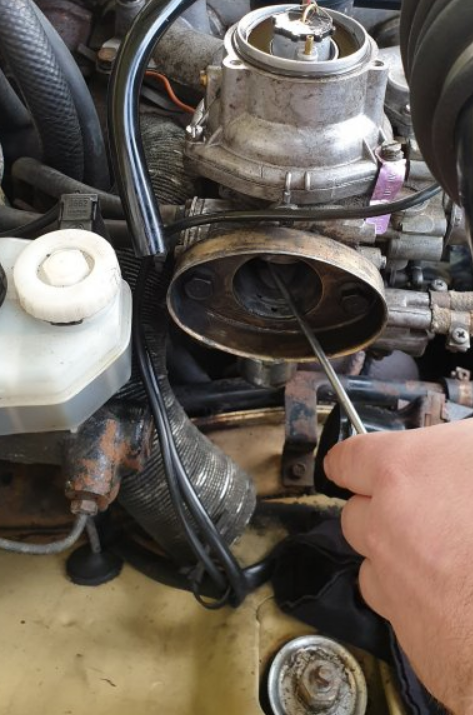
Trevorseaf
Members-
Posts
133 -
Joined
-
Last visited
Everything posted by Trevorseaf
-
Bosch wipers are very effective in efficiently clearing snow, especially in harsh temperatures such as those seen in Texas. These wipers demonstrate exceptional performance and reliability. Please be advised that the following statement is not intended as promotional material. I am sharing my personal experience on a common problem I had with both my Audi A3 and my wife's Honda vehicle. During a period in the previous year, the front wiper had some difficulties, prompting the purchase of an aftermarket replacement. Regrettably, the specific brand of the replacement wiper has been forgotten. However, it is sad that the replacement wiper failed to function properly and, furthermore, resulted in additional damage to the windscreen. The occurrence may be attributed to the inadequacy of the wiper itself, which was not of satisfactory quality. Additionally, the size of the wiper was not a perfect match to its predecessor. Subsequently, I successfully rectified the issue; nonetheless, this experience imparted onto me the valuable lesson of consistently verifying the appropriateness of the wiper size to preempt any potential complications. I would also recommend ensuring knowledge of the appropriate windscreen wiper size before to replacement in order to mitigate any complications. Personally, I adhere to a biennial schedule for the replacement of my Honda wiper blades.
-
£500 to £900
-
Determining the Optimal Dash Cam Selection
Trevorseaf replied to IrvesBMW's topic in General Discussions
I have just acquired these items for my daughter's automobile. The reviews seem to be positive, and I am somewhat satisfied with my experience. However, I lack a basis for comparison since I have not previously owned or used similar products. It has been suggested that the installation of these devices might potentially result in a reduction in insurance premiums by as much as 30%. The discovery of a new policy will occur in November. -
I kindly want guidance on a pair of CLKs.
Trevorseaf replied to CodeCrusader's topic in General Discussions
The diesel variant in question is likely to be one of the latter models of the om646 series, renowned for its exceptional durability, as attested by others. The petrol vehicle in question has a higher Vehicle Excise Duty (VED) due to its registration occurring subsequent to March 2006. If considering a purchase within this particular price range, I would choose not to select one of the aforementioned options. Instead, I would choose to get the CLK500, an aesthetically impressive vehicle being listed by merc85 in the classifieds section of this forum. The M113 with a length of 500 meters is known for its exceptional resistance to explosive devices and has a decreased vulnerability to explosive detonations (VED). -
Being truthful is a logical course of action due to the occurrence of a break in my water outlet housing, resulting in a significant coolant leakage. during replacing the housing, I observed a substantial accumulation of oil on the surface of the cooler. Consequently, I proceeded to cleanse the area and install the new component. However, during reevaluation, I discovered a reoccurrence of oil accumulation on the top of the cooler.
-
The vehicle exhibited a coolant leakage issue, prompting me to have it repaired. The specific component requiring replacement was the water housing situated above the oil cooler. During the inspection, I saw a significant accumulation of oil on the surface of the oil cooler, leading me to identify it as the source of the problem. However, is it plausible that a significant amount of oil would be lost from the cooler?
-
I am revisiting this discussion to inquire about the resolution of the aforementioned problem. I have been experiencing a similar issue for some weeks now. Despite having changed the fuel filter and the low-pressure fuel pump (LPFP) sensor, the error continues to persist. Furthermore, I encountered the same 'low fuel level' message today, which was previously unfamiliar to me. The clearing process did not occur initially, but eventually succeeded after around ten attempts. I am uncertain about the necessary steps to do prior to replacing the in-tank fuel pump and high-pressure fuel pump, since it seems to be an unproductive endeavor.
-
Reducing Your Engine's Carbon Footprint.
Trevorseaf replied to clk320x4's topic in General Discussions
I have no idea how to send a private message, but if you want to contact me at [email protected], that would work. I'll be checking email after midnight tonight to respond to any messages you send. Best wishes for the next year! -
Reducing Your Engine's Carbon Footprint.
Trevorseaf replied to clk320x4's topic in General Discussions
Thanks for the link, I just bought the 500 ml bottle to test it out and will upgrade to the 2.5 liter if it does the trick. It cost me $22.50 including shipping; can I get it in auto shops like Halfords? I If you know the owner well and think he would be willing to have this posted on his website(s), please contact us and let us know. We manage a few websites that sell to the motor home user market. -
Reducing Your Engine's Carbon Footprint.
Trevorseaf replied to clk320x4's topic in General Discussions
Even though I've heard that you shouldn't use Bio-Diesel in an Audi A6, I'm going to give it a go anyhow. Although I have never put cooking oil in any vehicle I have had, I have heard stories of folks who did so until the cost of fuel became too high. -
Reducing Your Engine's Carbon Footprint.
Trevorseaf replied to clk320x4's topic in General Discussions
Isn't it amazing that Jim's addition, Rhino, makes gas from the grocery store burn cleaner? For as long as I can remember, I've had the sneaking suspicion that the gasoline they manufacture must be of a worse quality than what's sold at the stations owned by the company. When it comes to the fuel of high-tech engines, I have heard conflicting information. Some high-end Mercedes owners have told me that they are not allowed to use Redex for Diesels because it can clog certain systems or special filters. I used to throw everything and everything into the back of my Nissan Terrano (London Taxi type engine) and it never gave me any trouble. Does Audi back the Rhino platform? And if they do, where can one get it? -
Reducing Your Engine's Carbon Footprint.
Trevorseaf replied to clk320x4's topic in General Discussions
Thanks for the helpful YouTube video; I've sent it to a friend in Cape Town who fixes Hillman Imps, since he often works with vintage vehicles like the one shown. There used to be a gadget you could purchase that would constantly inject water into your engine in the hopes of burning gasses that wouldn't burn without the water. On days when there is a lot of moisture in the air, as when it's raining or extremely humid, I've found that older automobiles perform better. Do any of you guys remember these? As far as I know, they were taken off the market because their valves would melt at the higher temperatures. Possibly the water formed when hydrogen and oxygen atoms split. Have any thoughts on this? I also just read that there are plans to construct hydrogen filling stations around the UK and that we will be driving 100% hydrogen-powered automobiles by 2015? Imagine a R8 powered by hydrogen; can you conffim it? I first heard about it on AOL News. -
May I request your assistance? The BMW 1 Series M Sport is experiencing a complete inability to initiate engine ignition. Despite the key fob successfully unlocking the vehicle, the battery and starting motor are functioning properly. Please include furth
Trevorseaf replied to Ortsmatt's topic in General Discussions
The use of technology is a remarkable phenomenon, but subject to malfunctions and errors. -
May I request your assistance? The BMW 1 Series M Sport is experiencing a complete inability to initiate engine ignition. Despite the key fob successfully unlocking the vehicle, the battery and starting motor are functioning properly. Please include furth
Trevorseaf replied to Ortsmatt's topic in General Discussions
In the event of failure to initiate, what specific actions does it undertake? -
Audi Arnott Parts for Your Air Suspension?
Trevorseaf replied to drummer's topic in General Discussions
In this discourse, I would like to propose a shift in perspective regarding the subject matter at I am not inclined to provide my personal information to profit-seeking entities inside the corporate sector. However, if you are an individual seeking assistance with a self-directed solution, I am willing to provide my support. I refuse to provide information to another firm. It is plausible that some enterprises possess the knowledge and expertise to effectively restore these compressors, hence generating substantial profits as a result. I am unable to recall their name, which may indicate a lapse in memory. Consequently, there is uncertainty on the accuracy of the information provided. Please inform me. -
Audi Arnott Parts for Your Air Suspension?
Trevorseaf replied to drummer's topic in General Discussions
I have successfully restored functionality to a malfunctioning compressor. I am able to provide assistance if you are located in close proximity to Portland, Oregon. I am disappointed by the unavailability of compressor components and the general acceptance of the cost associated with their replacement. Regarding the air bladders, I came across a post whereby one individual resorted to the application of stop leak substance inside one of these bladders as a temporary solution. This approach does not need advanced scientific knowledge. -
The information you have provided is quite valuable. I successfully resolved my issue using the assistance provided in this forum discussion. If I need any information, I will reach out to you through the following link: https://forums.mbclub.co.uk/threads/code-gosloto-p1955-lunchtime-help-lotto4d-needed-please.The provided text, "265063," does not contain enough information to be rewritten in an We express our gratitude for your input.
-
I have extensively searched online resources for comprehensive instructions on the adjustment and tuning of Stromberg carburetors. Several of these sources have proven to be highly informative, enabling me to successfully locate a copy of the Haynes manual specifically dedicated to Zenith Stromberg carburetors. It is worth noting the remarkable diversity among Zenith, Stromberg, and Pierburg carburetors, as the multitude of variants is quite substantial. Consequently, I have encountered considerable difficulty in finding an online photograph that precisely matches the configuration of my own carburetor. The Ruddies website has proven to be a valuable resource in my research. Through its assistance, I have successfully identified my carburetor model as the Stromberg 175CD (T- with automated choke) "Build 3," which was installed in vehicles between July 1973 and July 1976. Based on my analysis, it seems that the distinguishing factor subsequent to 1973 was the incorporation of the pierburg fuel cutoff solenoid. At this juncture, I will provide contextual information, perhaps aiding in the diagnosis or assistance of those with analogous difficulties. The automobile was acquired in the middle of 2019 and had a tendency to be difficult to start. Once started, it required the application of throttle until it reached optimal operating temperature. This behavior led to the suspicion that the automated choke mechanism was malfunctioning, since online sources often mentioned issues related to choke units. The issue at hand was not of significant magnitude, and after the vehicle had reached an optimal temperature, starting its operation posed no difficulties. Consequently, I chose to postpone the resolution of this matter and instead derived satisfaction from using the vehicle for a few months. In May 2020, subsequent to the passage of time, an acquaintance's paternal figure becomes aware of my difficulties in starting the automobile's engine and kindly extends an offer to inspect the matter. The individual has a considerable amount of mechanical expertise in relation to vintage automobiles, although excluding Mercedes models. The first step was examining the auto choke mechanism, during which it was seen that the coil functioned appropriately when subjected to heat. However, I am now contemplating whether this observation is indicative of the auto choke effectively operating, considering its reliance on a power source in addition to the provision of hot water from the thermostat. The individual proceeded to inspect the dashpot and the diaphragm, both of which were found to be in satisfactory condition. Subsequently, attention was directed towards the examination of the distributor and the timing. At that moment, the observation was made that the points inside the distributor were noticeably dislodged, since the screw responsible for securing them had been stripped and was only producing a rattling sound. A new screw was installed, the points spacing was adjusted, and all components were reassembled. The vehicle successfully started, however, it is now experiencing a severe misfire. Ultimately, the spark plugs were removed and discovered to be heavily coated with soot. However, despite the use of clean spark plugs, the misfire continued. We enlisted the services of an experienced technician specializing in carburetors, but lacking expertise specifically in Mercedes-Benz vehicles. The individual made adjustments to the timing and other relevant factors. However, it was discovered that in order to start the car's ignition, a direct connection of a 12-volt power supply to the fuel cutoff solenoid located underneath the carburetor was necessary. At this juncture, there were uncertainty among all individuals about the functionality of the fuel cutoff mechanism. The engine required a direct current of 12 volts in order to initiate the starting process. While the engine was able to start and maintain an idle without any issues, it exhibited difficulty in achieving higher revolutions per minute. In the event that the engine is started and the 12-volt power supply is disconnected, the engine will exhibit increased revolutions per minute (RPM) but will fail to maintain a stable idle speed. Based on my extensive research and personal investigation, I have discovered that the pierburg fuel cutoff system, which was installed in vehicles starting from 1973, is designed to be fail-proof. Additionally, a delay relay connected to the no.4 fuse in the fusebox is installed in conjunction with this system. When the ignition is turned off, the cutoff solenoid receives power for a duration of approximately 5 to 6 seconds. This power supply effectively halts the fuel flow, thereby preventing the occurrence of engine run-on. It is worth noting that this setup appears to have been carried over to the W123s and subsequently to the W201/124 carbureted cars. Upon inspection of my W115, I successfully located a little silver relay that was found to be disconnected. It is worth noting that this relay had not been tampered with by myself or anybody else over the whole duration of my ownership. I had seen occasional instances of excessive expansion during hot weather, among other factors, but these occurrences were not significant enough to warrant significant attention or concern. However, it is unclear why it was necessary to supply power to the solenoid in order to initiate the car's operation. To investigate this further, I detached the solenoid assembly, which is integrated with the richness adjusting screw, and provided it with a 12-volt electrical supply to observe its behavior. Upon examination, the solenoid appeared to function properly, as the small spherical plastic float stopper ascended, seemingly obstructing the fuel flow, and descended once power was discontinued. One possible explanation is that the fuel, when introduced into the float chamber, may have had an unintended buoyancy effect. It seems that there is a spring assembly present, with the sphere positioned in the center. There is a possibility that the sphere may get dislodged from its position. Subsequently, I contemplated the possibility of eliminating the solenoid entirely, which prompted me to acquire a Zenith 175 via a £10 transaction on the online marketplace, eBay. The vehicle in question is derived from a previous generation of the Range Rover model and lacks the solenoid component. The adjustment screw in question is a straightforward component. The design of the float chamber and jet assembly exhibits notable differences, particularly in the length of the adjusting screw. In the case of the Stromberg, this screw is relatively shorter and is threaded into the jet. Although it is just barely long enough to reach the bridge, it fails to effectively prevent petrol leakage. The W115 vehicle was started, however I refrained from operating it for an extended duration to allow the exhaust to reach high temperatures due to the presence of a fuel leak (despite my want to do so after a considerable period of time). I began contemplating the inherent characteristics of the primary solenoid module, specifically with regards to the possibility of eliminating the float and spring components in order to transform it into a conventional adjusting screw mechanism. No, it would be unfeasible to extract them since the apertures are very narrow, and I am reluctant to do any harm to them. The procedure included inserting a slender nail into the upper part of the apparatus and afterwards applying light taps to displace the plastic float stopper downwards, so preventing it from floating upwards upon the introduction of fuel. This action ensures that the solenoid does not exert any upward force on the float stopper if it is not properly attached. The current state of my progress is nearly aligned with my current position. I have reinserted the adjustment screw and tightened it fully just above the bridge. As a result, the car is able to start, albeit with the assistance of a screwdriver to lift the piston. Additionally, if the car is kept running until it reaches a warm temperature, it is able to maintain an idle. Consequently, I proceeded to follow the prescribed steps for tuning the car, as outlined in online resources and the Haynes manual. Starting from the idle position, I incrementally enriched the mixture by approximately 1/8th of a turn at a time. Simultaneously, I lifted the piston by approximately 1mm after each adjustment. This process was repeated until lifting the piston no longer had any discernible impact on the RPM. At that juncture, the vehicle was operating at an approximate engine speed of 1800 revolutions per minute (rpm). My vehicle is equipped with a solitary idle screw responsible for regulating the position of the butterfly valve. I adjusted this screw counterclockwise to achieve an engine speed of approximately 750 rpm, although I still perceive the idle to be somewhat elevated. It is noteworthy to mention that the vehicle consistently exhibited a high idle speed. This observation led me to speculate that the previous owner may have compensated for a malfunctioning automatic choke by intentionally setting the idle speed too high. After making adjustments to the tuning, the vehicle exhibited smooth and consistent revving throughout its entire range without experiencing any instances of backfiring. Subsequently, I proceeded to take the vehicle for a brief drive along my lane, marking the first time in several months. Notably, the vehicle allowed me to turn it off and on multiple times without any complications. Following a short pause of approximately 30 seconds to tidy up my tools, I attempted to start the vehicle once more, and it successfully initiated without any signs of coughing or sputtering. Once again, I enlisted the assistance of another individual to rotate the object, afterwards using a screwdriver to elevate the piston, resulting in the immediate ignition of the mechanism. The situation is quite vexing. If you have reached this point, I express my sincere gratitude for dedicating your time to attentively consider my predicament. I have developed a strong affinity for the stroke eight, but its perplexing nature has caused me several nights of restlessness spanning several months. Tomorrow, I will attempt to change the float level and make an effort to readjust the idle screw in order to assess its potential impact. Today, an experiment was conducted by applying a diluted solution of Fairy liquid and water as a fine mist to various surfaces in order to detect any potential vacuum leaks. The results of this investigation indicate that no such leaks were detected. Thank you for your assistance so far. I am not prepared to abandon my pursuit of understanding the Stromberg, as it offers valuable educational opportunities. It is evident that the intricacies of the carburetor were once a perplexing and intimidating subject for me.
-
The diaphragm seems to be in satisfactory condition; nonetheless, I have opted to get a new in order to completely remove any potential issues. I recently acquired a vintage Zenith 175 carburetor, originally sourced from a previous generation Range Rover, for a nominal sum of ten units of currency. My intention was to explore the potential utility of salvaging any functional components from this carburetor. Upon inspection, I observed that the piston within the Zenith 175 exhibits a noticeably greater degree of freedom of movement when manually lifted, in comparison to the piston in my own carburetor. Notably, when I remove the damper from my carburetor, its piston exhibits a similar level of freedom. In light of this, I am curious to ascertain whether any measures can be taken to address this disparity. Additionally, I currently have automatic transmission fluid (ATF) within my carburetor. I am uncertain as to whether this lubricant is excessively dense for optimal performance. The phenomenon is really peculiar.
-
Greetings, everyone. I am in possession of a 1976 w115 200 model vehicle equipped with the Stromberg CD carburetor. I am now experiencing difficulty initiating the starting process, unless I manually elevate the needle/piston using a screwdriver. This behavior suggests a potential issue whereby the piston may possess excessive weight, hence impeding the starting mechanism. This particular item has a red cap that is positioned slightly off center, with the damper located just below it. Based on the observation that the needle seems to have sprung, it is reasonable to posit that it is likely in satisfactory condition. The item does not seem to be worn. I have used ATF (Automatic Transmission Fluid) as the dashpot oil. Is this compatible with a red cap? There have been occasional forum posts that discuss the use of various oils in correspondence to the color of bottle caps. What is the recommended quantity of oil to be added? It is conceivable that an excessive amount of a certain factor may impede the appropriate upward movement of the piston.



